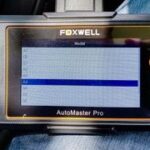It’s a common frustration for car enthusiasts and professionals alike: you’ve got your ELM327 Bluetooth OBD-II scanner, ready to diagnose your vehicle with your iPhone, only to find they simply won’t connect. Why is it that OBDII, a universal standard for vehicle diagnostics, seems to clash with your Apple iPhone? You’re not alone in facing this issue, and understanding the reasons behind “OBDII not supported iPhone” is key to finding the right diagnostic solutions.
The core of the problem often lies in Bluetooth compatibility. ELM327 scanners, popular for their affordability and versatility, frequently utilize Bluetooth technology for wireless communication with devices. While iPhones and iPads are equipped with Bluetooth, they sometimes struggle to establish a connection with these generic Bluetooth OBDII dongles. Users attempting to pair their iPhone with an ELM327 scanner via the standard Bluetooth settings menu often find the device is not discoverable, unlike their Android counterparts which usually connect seamlessly.
This disparity isn’t due to a fundamental flaw in OBDII itself, which is a standardized protocol designed to be universally accessible across vehicle brands for retrieving diagnostic trouble codes and live data. The issue is more nuanced and relates to Apple’s Bluetooth protocol implementation and ecosystem restrictions. Apple devices are known for their stringent security measures and specific Bluetooth profiles they support. Generic ELM327 Bluetooth adapters might not fully align with these requirements, leading to pairing failures.
Furthermore, Apple’s Made for iPhone (MFi) program imposes guidelines for hardware accessories to ensure compatibility and quality. Many budget-friendly ELM327 Bluetooth scanners are not MFi certified, which can contribute to connectivity problems with iOS devices. This certification process ensures a certain level of hardware and software integration that might be lacking in non-certified devices, potentially impacting Bluetooth pairing and data transmission reliability.
However, it’s crucial to note that “OBDII not supported iPhone” is not entirely accurate. iPhones can work with OBDII scanners, but often require specific types of connections or certified devices. Wi-Fi based OBDII scanners, for example, bypass the Bluetooth pairing complexities and often provide a more reliable connection with iPhones. Additionally, some newer Bluetooth OBDII scanners are emerging that are specifically designed to be compatible with iOS, sometimes incorporating different Bluetooth protocols or MFi certification.
In conclusion, while direct Bluetooth pairing between generic ELM327 scanners and iPhones can be problematic, it’s not a blanket incompatibility with OBDII. The limitations stem from Bluetooth protocol differences and Apple’s ecosystem requirements. For iPhone users seeking OBDII diagnostics, exploring Wi-Fi based scanners or researching Bluetooth scanners specifically advertised as iOS-compatible are viable alternatives to overcome the “OBDII not supported iPhone” challenge and unlock their vehicle’s diagnostic data.


